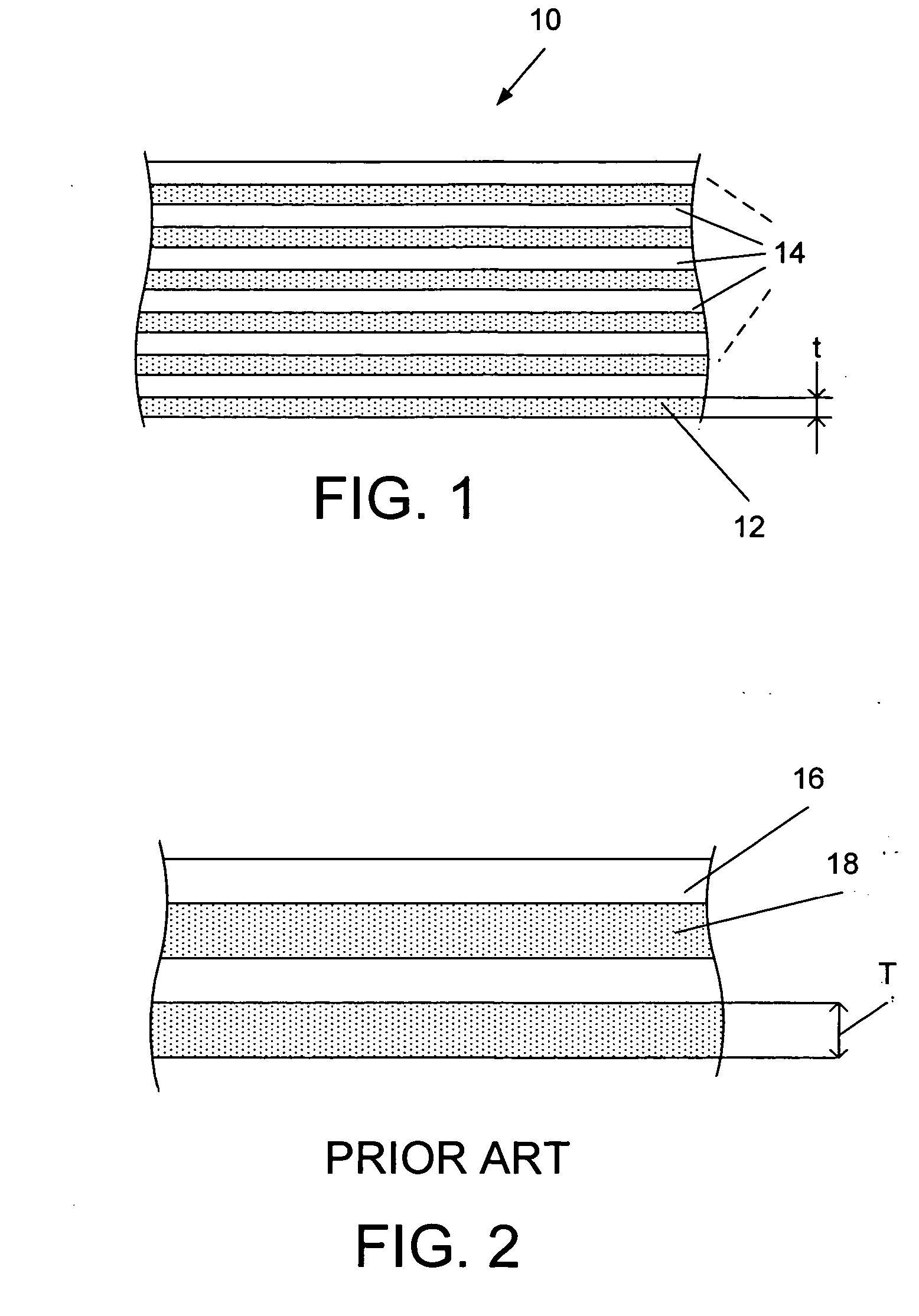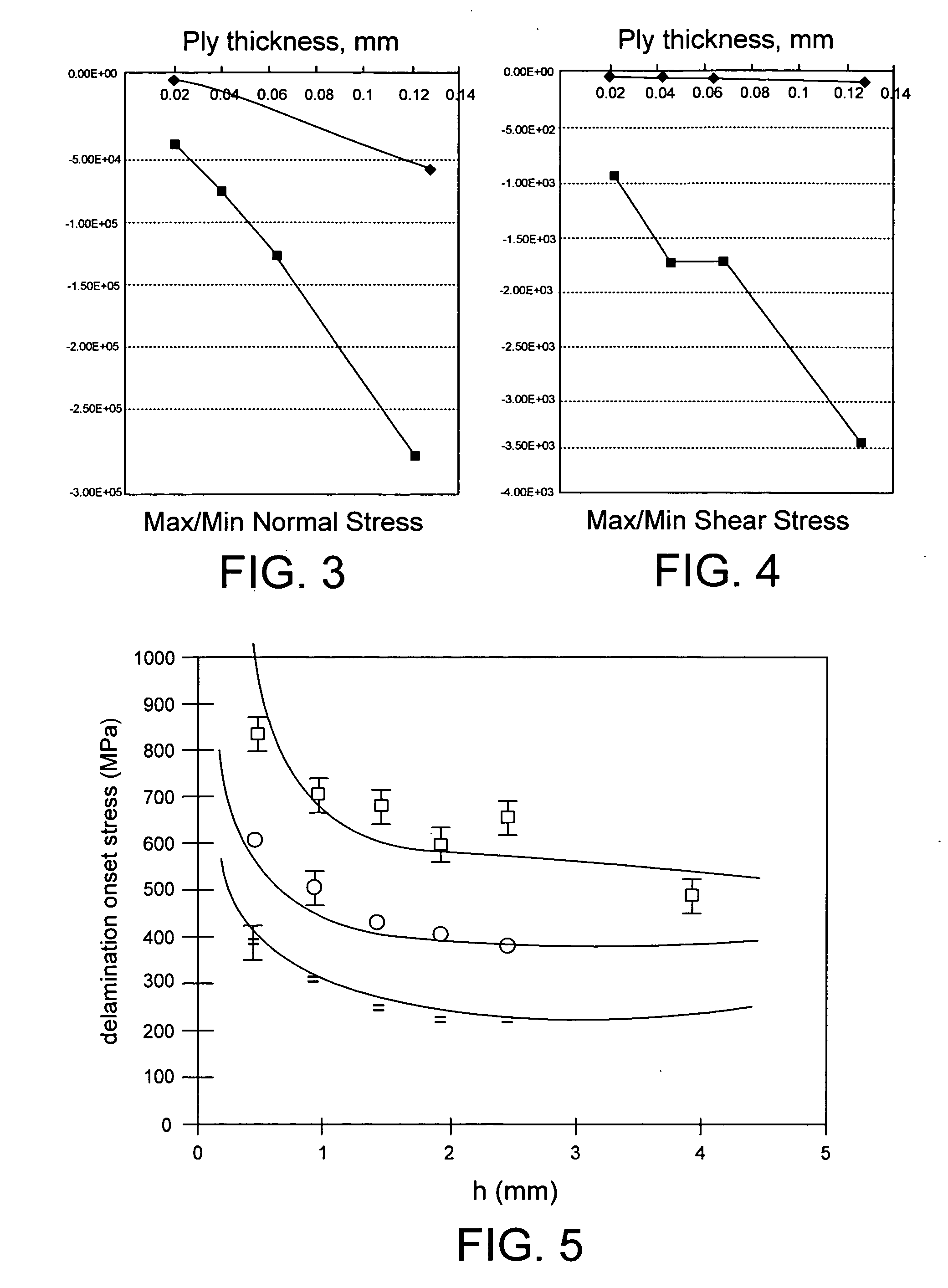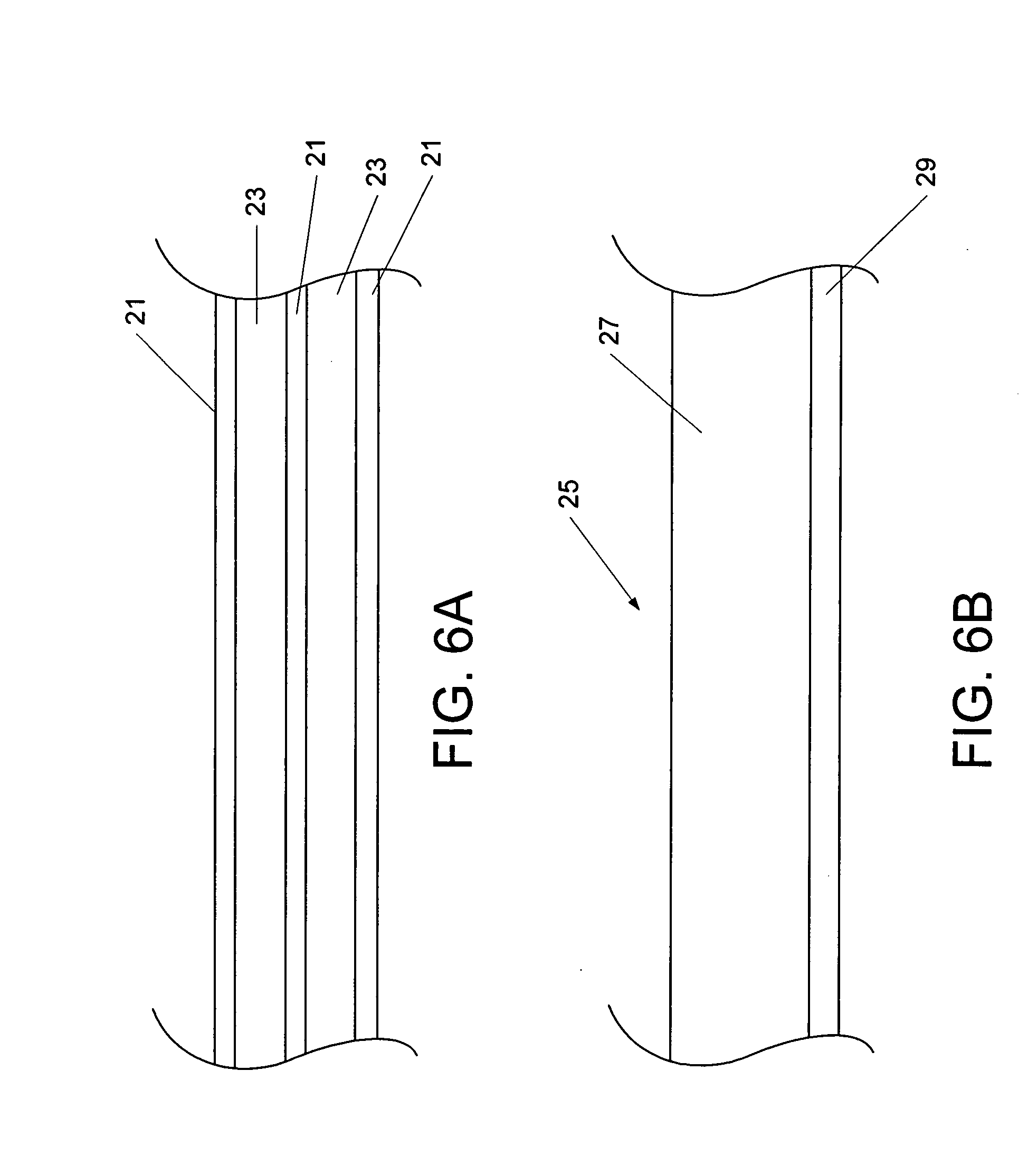Thin ply laminates
a technology of laminates and thin sheets, applied in the field of fiber composite materials, can solve the problems of limited realization of the full potential of critical in-plane loading carrying capacity, affecting the acceptance of composite materials for many applications, and affecting the performance of composite materials, etc., and achieves the effect of reducing the risk of delamination, and reducing the cost of the approach
- Summary
- Abstract
- Description
- Claims
- Application Information
AI Technical Summary
Benefits of technology
Problems solved by technology
Method used
Image
Examples
example 1
[0041] An example according to the present invention includes a combination of thick ply with 0.12 mm thickness and thin ply with 0.02 mm thickness. This is illustrated in FIG. 6A with thin plies 21 and thick plies 23. Further, a sublaminate 25 as in FIG. 6B can be a thick-thin hybrid having one thick [0] ply 27 and one thin [90] ply 29. The total thickness of this sublaminate module could be 0.12 mm+0.02 mm=0.14 mm and the percentage of [0] in this case would be 0.12 / 0.14=86 percent. Using this sublaminate to build a mast or boom provides a highly anisotropic structure having a toughness not possible with conventional laminates using only thick plies. For the latter case, the repeating module of thick plies would have to be 9 plies of [0] and one ply of [90]. The total sublaminate thickness would be 1.20 mm with the percentage of [0] equal to 90 percent. This design has 9 plies of [0] stacked together, which is a poor design from the standpoint of toughness. This practice makes mas...
example 2
[0042] If a higher percentage of [0] is desired, it is possible to have two thick plies [0] following by one thin ply [90]. In this case the percentage of [0] would be 0.24 / 0.26=92 percent. A tri-directional sublaminate module having two [0] and one [+ / −45] would have a percentage of [0] of 0.24 / 0.28=86 percent. Both these examples will give the mast or boom much tougher laminates. This hybrid structure is also useful for drive shafts, leaf springs, and sporting goods (e.g. pole vault shafts, hockey sticks, golf clubs, etc.).
example 3
[0043] Another example of a thick-thin ply laminate is a tri-directional sublaminate having one thick 0.12 mm ply [0] and two thin 0.02 mm, angled-plies [+ / −30] or [+ / −45], such as a [+30 / 0 / −30] or [+45 / 0 / −45] module. The total sublaminate thickness is 0.16 mm, which can be accomplished as one step in a ply drop. Tri-directional modules of any combination of thick and thin plies can be produced. This design flexibility allows products with significantly improved laminate performance and significant cost savings in manufacturing.
PUM
| Property | Measurement | Unit |
|---|---|---|
| Thickness | aaaaa | aaaaa |
| Thickness | aaaaa | aaaaa |
Abstract
Description
Claims
Application Information
 Login to View More
Login to View More - R&D
- Intellectual Property
- Life Sciences
- Materials
- Tech Scout
- Unparalleled Data Quality
- Higher Quality Content
- 60% Fewer Hallucinations
Browse by: Latest US Patents, China's latest patents, Technical Efficacy Thesaurus, Application Domain, Technology Topic, Popular Technical Reports.
© 2025 PatSnap. All rights reserved.Legal|Privacy policy|Modern Slavery Act Transparency Statement|Sitemap|About US| Contact US: help@patsnap.com



